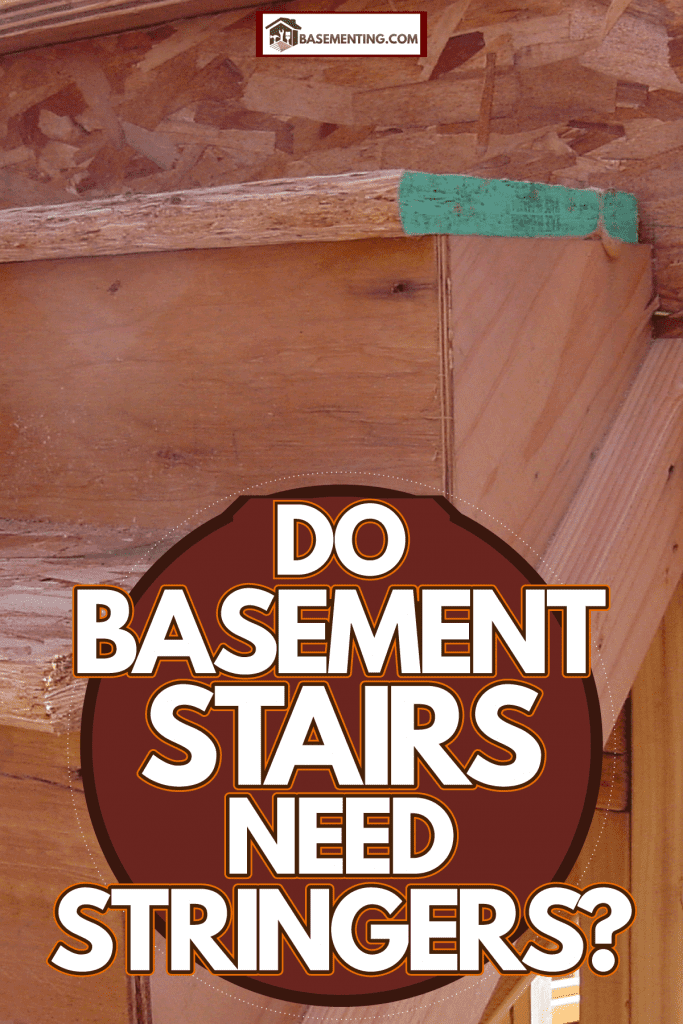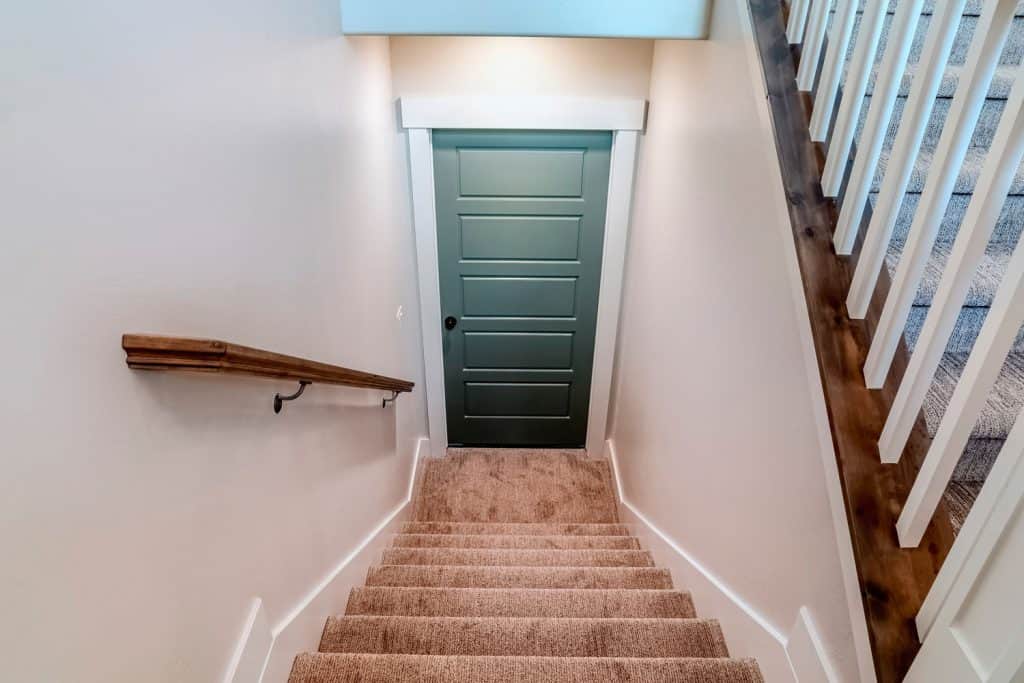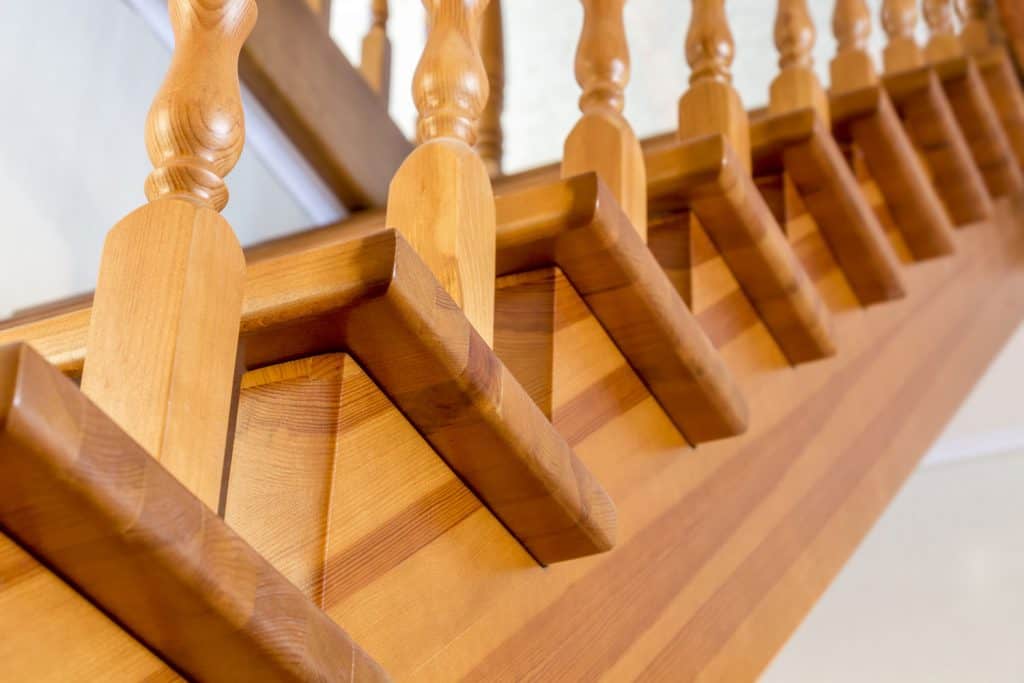Basement stairs give you the pleasure of entering the room with efficiency. Stringers serve as the support of the steps, to build a staircase. Basement stairs and stringers together sound like a good idea as both play a good role identically. So, you might ask yourself, is this really necessary? We gladly did all the research to get the answers for you.
Basement stairs need stringers because it connects the gap between two floors, most specifically the gap between the rim joist on the upper level and the floor surface on the lower level of the stairs. The risers and treads of the stairs are straightly in place with the stringer which helps influence the run and rise of your staircase. Stringers allow safety and support to anyone using the stairs.
Although basements are rarely the most seen areas of the house, it is important to know the important guidelines that will surely help you set up a good basement with neat access whenever you need to use it. You can read further to know more about basement stairs and stringers and their important features.

Benefits of Stair Stringers
Structure
Almost all stairs seen in buildings and homes have stringers. It is one of the stairs' important components. Stringers contribute a lot of support to the structure of the stairs from treads, risers nosings, and railings. There is even a variety of stringers to help provide the overall balance and function of a stair.

The stringer fascia is located vertically on the inside covering of the stinger. A stringer capping is the top-most part of the finished surface of the stringer and the shoe mold should be the one that encloses the gap of the shoe and dry-wall.
However, the shoe mold depends on the type of stringer that is designated stair in the basement area.
Understanding the structure of the staircase is important because this gives you the idea as to how each part functions and gives support to the other to come up with an intact staircase fit for your basement and to your liking.
Durability
Stringers give basement stairs protection and sturdiness as they reduce the shakiness, scratches, and stains that taint the surface of the stairs. Putting stringers in basement stairs is a smart move since basements are usually the room where all your heavy storage goes.
Things like old home decorations, furniture, rarely used materials in the house, donation boxes, and other things are easily put away in the basement for keeping.
Basement stairs do require strength to hold onto heavyweight since all the activities that may happen in basement rooms require a lot of lifting, moving, and storing so it is important to take note of the toughness of the staircase.
Adding stringers is one of the best hacks to extend the life of your staircase with the advantage of reliability and utility that comes along with it.

Safety
Coming up and down from the stairs is a risky position as you may either trip or fall in one wrong move. Stairs are liable for any injuries and harm. Studies have shown that a lot of tragic deaths and accidents have occurred due to stairways.
Fortunately, stringers offer a kind of reassurance with regards to the safety of you climbing up and down the stairs. A stringer is a structural member that is either attached to the side of the stairs or the flight of the stairs to which treads and risers are affixed. One of the main functions is to provide framework and support to treads and risers.
These stringers enable the stairs to become more sturdy. Additionally, stringers placed underneath the stairs conceal the treads from being visible, keeping them in shipshape. Stringers help you be organized and careful at the same time.

How Many Stringers Do Basement Stairs Need?
The amount of stringers needed depends entirely on your choice and need. However, to be very specific, there are certain measures for stringers according to the length and width of the basement stairs.
For every 16-inches of stair width, you are going to have to need at least one stringer. So, if you have a three-foot-wide staircase, you are going to need three stringers.
If you have a 48-inches width of the stairway, it is likely to you will need four stringers. The number of stringers you need forms the thickness of your stair tread.
Just remember to get accurate measurements from the upstairs, floor level, and basement floor so that you will know how many stair stringers you need according to your measurements.

How Far Apart Should Stringers Be?
Stringers should be no more than 36-inches apart from each other to give the stair the kind of maximum support it needs. Stringers are made of two-foot by 12-foot boards and should be five inches thick to give enough base for the stairs.
When spaced enough sufficiently, stringers provide enough support to the treads of the stairs. Stringers support the force exerted on the stairs when you walk up to it. This is why its spacing should also be utilized.
You can check out "How Wide Do Basement Stairs Need To Be?" as a guideline on how to measure your stringers when you want to attach them to your basement stairs.

How Do You Strengthen Stair Stringers?
As much as it is mentioned in this article that stringers make stairs durable and strong, you must also consider the solidness of the stringer in place to make sure that its quality will last long to support the stairs.
To strengthen stair stringers, it is important to nail them impeccably. One thing to consider when nailing stringers is the quality of the nails used. It is suitable that you use 8D nails and put one in every 16-inches on each side of the break of the stringers.
8D nails are 2.5 inches long and they go in perfectly with stringers because of their appearance and foundation. It does not split the stringers and most of all, provides further support to stair stringers.
Check out these 8D nails on Amazon.
Can You Fix Stair Stringers?
Most of the time, basements do not have the priority of being noticed in the house as their main function is for storing. For this reason, the basement room is prone to dampness and moisture, flooding, grubbiness, and even pest infestation.
These disadvantages will cause damages to the basement, most specifically to the stairs. The stringer is more likely to rot in case of flood or moisture. The stair stringer can also be one of the passages that rats use to hide in the basement.
In case these situations take place, stringers can be fixed in a very low-cost way! All it takes is plywood that will help support the gap between the stringers and the basement floor.

Stringers may look hard to fix and replace because of the closeness it provides the stairs, but it is structural and functional even to the point of their damage.
If you want tips on how to keep your basement stairs ideal to keep you away from household problems, you can read through "How To Insulate Under Basement Stairs"
In Closing
Basement stairs may only be sometimes used and rarely seen around the household, but it is best to know the importance of stringers in basement stairs as this component provides support to weight atop stairs.
Stringers serve to provide a sturdy and ideal staircase to prevent users from harm and injury. Stringers in basement stairs can also be of advantage to sustainability as they support the treads and risers to carry the force pressured in them. Just be reminded to get your measurements right and you will have the stairs your basement needs.
As explained, stringers provide basement stairs with reliability in terms of strength and safety. So be wise and construct yours correctly. In the context of basement stairs, it is better to be safe and thrifty, than be sorry and costly.


![wood staircase going down to the basement with kitchen. Can Basement Stairs Be Moved [And What To Consider Before Getting Started]](https://basementing.com/wp-content/uploads/2022/01/wood-staircase-going-down-to-the-basement.-Can-Basement-Stairs-Be-Moved-And-What-To-Consider-Before-Getting-Started-300x200.png)
![Steel plate cut in zigzag pattern for stair stringer fabrication, What Are Bilco Stair Stringers Made Of? [And What Sizes Are They]](https://basementing.com/wp-content/uploads/2022/01/Steel-plate-cut-in-zigzag-pattern-for-stair-stringer-fabrication-300x200.jpg)
